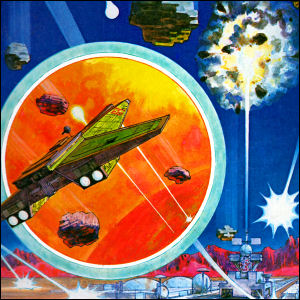 Mattel Electronics releases the Astrosmash cartridge for the Intellivision home video game system.
Mattel Electronics releases the Astrosmash cartridge for the Intellivision home video game system. ![]()

 Mattel Electronics releases the Astrosmash cartridge for the Intellivision home video game system.
Mattel Electronics releases the Astrosmash cartridge for the Intellivision home video game system. ![]()
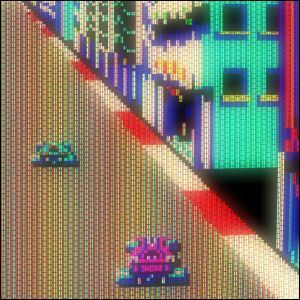 Sega raises the graphical bar for first-person driving games with the release, at year’s end, of the arcade game Turbo. Adding constantly-changing, scrolling scenery and a variety of other cars as obstacles, Turbo undoubtedly trips up many a video game racing veteran with pure eye candy.
Sega raises the graphical bar for first-person driving games with the release, at year’s end, of the arcade game Turbo. Adding constantly-changing, scrolling scenery and a variety of other cars as obstacles, Turbo undoubtedly trips up many a video game racing veteran with pure eye candy. ![]()
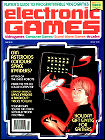 Reese Communications publishes the first issue – and, if it doesn’t sell well, likely the only issue – of Electronic Games Magazine, the first periodical devoted to video games and other electronic forms of entertainment. Video Magazine columnists Bill Kunkel and Arnie Katz (operating under the pseudonym Frank Laney Jr. in order to protect his more “serious” writing work) propose the magazine after a string of successful video-game-focused issues of Video, and, with Katz’ wife Joyce Worley joining in the writing and editing duties, become the first video game journalists, inventing such now-common terms as “playfield”, “screenshot”, and “Easter egg”. Though the first issue could have been a one-off experiment, the magazine goes monthly by the end of spring 1982.
Reese Communications publishes the first issue – and, if it doesn’t sell well, likely the only issue – of Electronic Games Magazine, the first periodical devoted to video games and other electronic forms of entertainment. Video Magazine columnists Bill Kunkel and Arnie Katz (operating under the pseudonym Frank Laney Jr. in order to protect his more “serious” writing work) propose the magazine after a string of successful video-game-focused issues of Video, and, with Katz’ wife Joyce Worley joining in the writing and editing duties, become the first video game journalists, inventing such now-common terms as “playfield”, “screenshot”, and “Easter egg”. Though the first issue could have been a one-off experiment, the magazine goes monthly by the end of spring 1982.
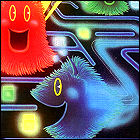 Beating Atari’s home adaptation of Pac-Man to the punch by nearly half a year, Magnavox introduces K.C. Munchkin for the Odyssey². Within three weeks, after widespread documented occurrences of dealers describing the game as “just like Pac-Man” (despite specific instructions from Magnavox not to do so), Atari sues Magnavox for violating copyright law.
Beating Atari’s home adaptation of Pac-Man to the punch by nearly half a year, Magnavox introduces K.C. Munchkin for the Odyssey². Within three weeks, after widespread documented occurrences of dealers describing the game as “just like Pac-Man” (despite specific instructions from Magnavox not to do so), Atari sues Magnavox for violating copyright law. ![]()
 Exidy’s colorful coin-op video game Mouse Trap arrives in arcades, challenging players to not only keep up with the action on screen, but to tap the right color-coded door button on the control panel at the right time, allowing the mouse to escape from hungry cats. In a very short time, Mouse Trap is deemed worthy of song on Buckner & Garcia’s upcoming album Pac-Man Fever.
Exidy’s colorful coin-op video game Mouse Trap arrives in arcades, challenging players to not only keep up with the action on screen, but to tap the right color-coded door button on the control panel at the right time, allowing the mouse to escape from hungry cats. In a very short time, Mouse Trap is deemed worthy of song on Buckner & Garcia’s upcoming album Pac-Man Fever. ![]()
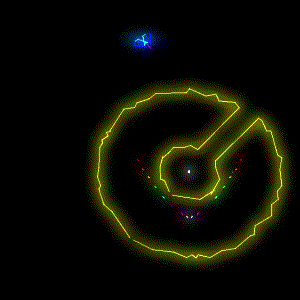 Sega/Gremlin releases the vector graphics arcade game Eliminator, in which one or two players team up (or go against each other) while trying to fire a shot down a narrow opening in a large, round, mobile space station with dangerous armament which is definitely not the Death Star. The two-player version is available as an upgright cabinet; a four-player cocktail table version is also made available.
Sega/Gremlin releases the vector graphics arcade game Eliminator, in which one or two players team up (or go against each other) while trying to fire a shot down a narrow opening in a large, round, mobile space station with dangerous armament which is definitely not the Death Star. The two-player version is available as an upgright cabinet; a four-player cocktail table version is also made available. ![]()
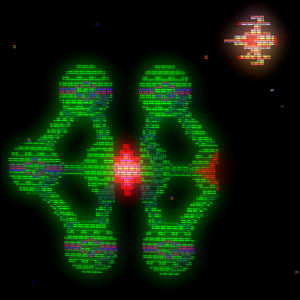 Midway releases the arcade video game Bosconian, licensed from Namco, the Japanese developers behind Pac-Man and Galaga.
Midway releases the arcade video game Bosconian, licensed from Namco, the Japanese developers behind Pac-Man and Galaga. ![]()
 Arcade game maker Universal presents its entry in the industry-wide rush to get “a game like Pac-Man” into locations everywhere, the maze chase Ladybug. This is the first game from Universal to utilize the unique “spell EXTRA” method of awarding players extra “lives”, which practically becomes a Universal trademark in later games.
Arcade game maker Universal presents its entry in the industry-wide rush to get “a game like Pac-Man” into locations everywhere, the maze chase Ladybug. This is the first game from Universal to utilize the unique “spell EXTRA” method of awarding players extra “lives”, which practically becomes a Universal trademark in later games. ![]()
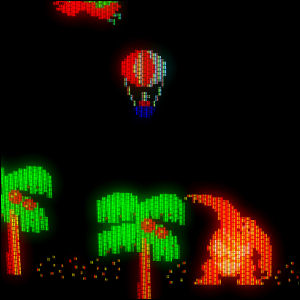 Better known for making jukeboxes and speakers, Rock-Ola continues trying to make inroads into the video game industry by releasing Fantasy in the United States. The arcade game, originated in Japan by SNK, is one of the very first coin-op games to allow players to insert additional coins to continue from the location of their previous game’s end within a set amount of time. With several screens requiring players to develop completely different strategies on the fly, Fantasy doesn’t gain much of a following; many arcade operators gut and convert their Fantasy machines into other games. (This is your webmaster’s all-time favorite arcade game.)
Better known for making jukeboxes and speakers, Rock-Ola continues trying to make inroads into the video game industry by releasing Fantasy in the United States. The arcade game, originated in Japan by SNK, is one of the very first coin-op games to allow players to insert additional coins to continue from the location of their previous game’s end within a set amount of time. With several screens requiring players to develop completely different strategies on the fly, Fantasy doesn’t gain much of a following; many arcade operators gut and convert their Fantasy machines into other games. (This is your webmaster’s all-time favorite arcade game.) ![]()
 Newly exposed to the rapidly expanding video game industry, Dallas businessman Patrick Roper files incorporation papers for a new video game manufacturer, Games By Apollo. Having started a video game company, Roper places ads in local newspapers seeking programmers to make games for the Atari VCS. In one year of operation, Roper – seeing the much better-funded Activision as his primary competition – overproduces all of Apollo’s nearly dozen titles, leading to a round of price cuts on the company’s products.
Newly exposed to the rapidly expanding video game industry, Dallas businessman Patrick Roper files incorporation papers for a new video game manufacturer, Games By Apollo. Having started a video game company, Roper places ads in local newspapers seeking programmers to make games for the Atari VCS. In one year of operation, Roper – seeing the much better-funded Activision as his primary competition – overproduces all of Apollo’s nearly dozen titles, leading to a round of price cuts on the company’s products.
 Atari releases the home version of the arcade hit Defender as a cartridge for the Atari VCS home video game system. Though the game undergoes major alterations to fit within the VCS’ memory, Defender sells well. It includes the first issue of a tie-in comic book, Atari Force, created by DC Comics (a subsidiary of Warner Communications, just like Atari).
Atari releases the home version of the arcade hit Defender as a cartridge for the Atari VCS home video game system. Though the game undergoes major alterations to fit within the VCS’ memory, Defender sells well. It includes the first issue of a tie-in comic book, Atari Force, created by DC Comics (a subsidiary of Warner Communications, just like Atari). ![]()
 Midway releases the arcade video game Kick, a whimsical game which is later updated to include a “guest starring” appearance by Pac-Man (to which Midway also holds the North American license).
Midway releases the arcade video game Kick, a whimsical game which is later updated to include a “guest starring” appearance by Pac-Man (to which Midway also holds the North American license). ![]()
 Mattel Electronics releases the Star Strike cartridge for the Intellivision home video game system.
Mattel Electronics releases the Star Strike cartridge for the Intellivision home video game system. ![]()
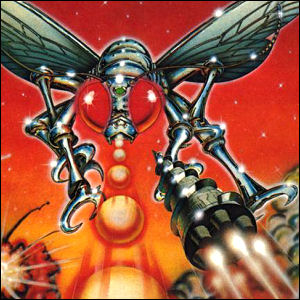 Atari releases the original title Yars’ Revenge for the Atari VCS home video game console. Despite not being a port of a popular arcade game (though it started out as an attempt to port Star Castle to the VCS), Yars’ Revenge sells well thanks for favorable reviews and good word-of-mouth. A pack-in comic from DC Comics, “Yars’ Revenge: The Qotile Ultimatum”, is included.
Atari releases the original title Yars’ Revenge for the Atari VCS home video game console. Despite not being a port of a popular arcade game (though it started out as an attempt to port Star Castle to the VCS), Yars’ Revenge sells well thanks for favorable reviews and good word-of-mouth. A pack-in comic from DC Comics, “Yars’ Revenge: The Qotile Ultimatum”, is included. ![]()
 Sierra On-Line releases the computer game Mouskattack. Designed by John Harris, this is one of several titles Sierra will publish to get a Pac-Man-style game on the home computer market before Atari can release an official port. It is available for the Atari home computers.
Sierra On-Line releases the computer game Mouskattack. Designed by John Harris, this is one of several titles Sierra will publish to get a Pac-Man-style game on the home computer market before Atari can release an official port. It is available for the Atari home computers. ![]()
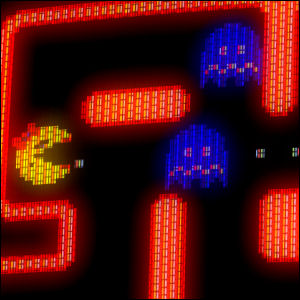 Midway delivers the long-anticipated sequel to Pac-Man to eager arcade operators. Ms. Pac-Man – a game which originated not from Pac-Man’s creators in Japan, but from an American “enhancement kit” maker called General Computer Corporation – arrives in arcades and immediately starts to break earnings records, eventually becoming the top-earning coin-op video game in American history.
Midway delivers the long-anticipated sequel to Pac-Man to eager arcade operators. Ms. Pac-Man – a game which originated not from Pac-Man’s creators in Japan, but from an American “enhancement kit” maker called General Computer Corporation – arrives in arcades and immediately starts to break earnings records, eventually becoming the top-earning coin-op video game in American history. ![]()
 Cupertino businessman Larry Jones incorporates Mythicon, a new video game software publisher focused entirely on providing games for the Atari VCS. With the knowledge that the market for VCS software is already becoming flooded, Mythicon’s business model involves selling games for a price point just under $10 each, and distributing them in grocery stores and drug stores rather than the usual retail chain outlets. Only three games – all three regarded as some of the worst yet produced for the VCS – are released before Mythicon closes up shop.
Cupertino businessman Larry Jones incorporates Mythicon, a new video game software publisher focused entirely on providing games for the Atari VCS. With the knowledge that the market for VCS software is already becoming flooded, Mythicon’s business model involves selling games for a price point just under $10 each, and distributing them in grocery stores and drug stores rather than the usual retail chain outlets. Only three games – all three regarded as some of the worst yet produced for the VCS – are released before Mythicon closes up shop.
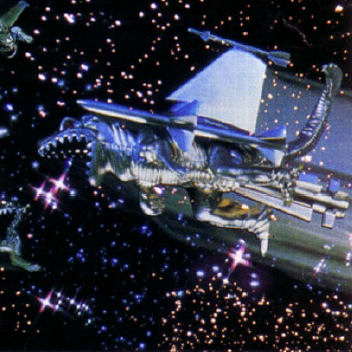 Imagic, recently formed from a group of ex-Atari programmers, releases its first wave of cartridges for the Atari VCS home video game system, including Rob Fulop’s Demon Attack, a game which quickly draws the legal ire of Atari itself.
Imagic, recently formed from a group of ex-Atari programmers, releases its first wave of cartridges for the Atari VCS home video game system, including Rob Fulop’s Demon Attack, a game which quickly draws the legal ire of Atari itself. ![]()
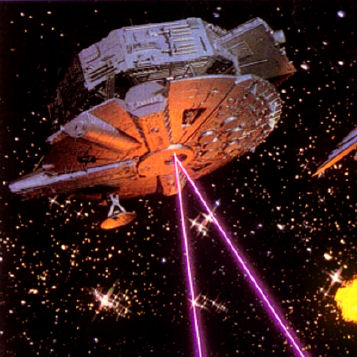 Imagic, recently formed from a group of ex-Atari programmers, releases its first wave of cartridges for the Atari VCS home video game system, including Bob Smith’s Star Voyager, a space shooter.
Imagic, recently formed from a group of ex-Atari programmers, releases its first wave of cartridges for the Atari VCS home video game system, including Bob Smith’s Star Voyager, a space shooter. ![]()
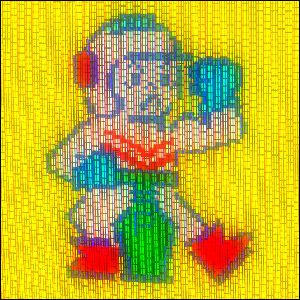 Atari releases the Namco-developed arcade video game Dig Dug in the United States. The game’s release is accompanied by an elaborate theatrical trailer, a rarity for any video game, then or now.
Atari releases the Namco-developed arcade video game Dig Dug in the United States. The game’s release is accompanied by an elaborate theatrical trailer, a rarity for any video game, then or now. ![]()
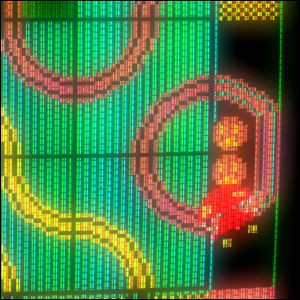 Konami introduces the arcade game Loco Motion in the United States, one of its earliest self-released coin-ops (most titles had previously been licensed through Stern).
Konami introduces the arcade game Loco Motion in the United States, one of its earliest self-released coin-ops (most titles had previously been licensed through Stern). ![]()
 Released a couple of years after the movie that inspired it, Parker Brothers’ The Empire Strikes Back for the Atari VCS is the very first official Star Wars video game to hit the market. Though games inspired by the movies have been appearing since the first film was still in theaters, this is the first game officially licensed by Lucasfilm. It pits players against an endless onslaught of Imperial Walkers (and unlike the movie’s rebels, the player has no chance of surviving indefinitely).
Released a couple of years after the movie that inspired it, Parker Brothers’ The Empire Strikes Back for the Atari VCS is the very first official Star Wars video game to hit the market. Though games inspired by the movies have been appearing since the first film was still in theaters, this is the first game officially licensed by Lucasfilm. It pits players against an endless onslaught of Imperial Walkers (and unlike the movie’s rebels, the player has no chance of surviving indefinitely). ![]()
![]()
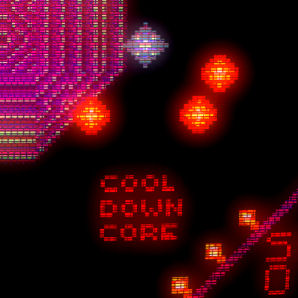 Gottlieb introduces the arcade game Reactor in the United States, a unique trackball-driven game with thumping synthesized hard rock musical accompaniment.
Gottlieb introduces the arcade game Reactor in the United States, a unique trackball-driven game with thumping synthesized hard rock musical accompaniment. ![]()
 In a federal court hearing in Chicago, Atari and Midway – as the American licensees of Pac-Man – are victorious over Magnavox, whose Odyssey² cartridge K.C. Munchkin was alleged to infringe on Pac-Man. The court ruling, which results in an injunction forcing Magnavox to pull K.C. Munchkin off the market, says it “captures the ‘total concept and feel’ of, and is substantially similar to, Pac-Man,” and that Magnavox “jeopardized the substantial investments of Midway and especially Atari.” Beaten but defiant, Magnavox releases a K.C. Munchkin sequel later in the year.
In a federal court hearing in Chicago, Atari and Midway – as the American licensees of Pac-Man – are victorious over Magnavox, whose Odyssey² cartridge K.C. Munchkin was alleged to infringe on Pac-Man. The court ruling, which results in an injunction forcing Magnavox to pull K.C. Munchkin off the market, says it “captures the ‘total concept and feel’ of, and is substantially similar to, Pac-Man,” and that Magnavox “jeopardized the substantial investments of Midway and especially Atari.” Beaten but defiant, Magnavox releases a K.C. Munchkin sequel later in the year.
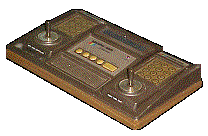 Emerson, an American radio and telvision manufacturer that has shown no previous interest in the video game boom, releases its own console, the Emerson Arcadia 2001. Intended to be a serious challenger to the Atari VCS and Intellivision, the Arcadia 2001 has limited graphics capabilities and a limited library boasting relatively generic sports games and knock-offs of popular arcade games, as well as a few incredibly obscure licensed arcade ports.
Emerson, an American radio and telvision manufacturer that has shown no previous interest in the video game boom, releases its own console, the Emerson Arcadia 2001. Intended to be a serious challenger to the Atari VCS and Intellivision, the Arcadia 2001 has limited graphics capabilities and a limited library boasting relatively generic sports games and knock-offs of popular arcade games, as well as a few incredibly obscure licensed arcade ports.
 The Stateside arm of Japanese video game maker Data East releases the arcade game Disco No. 1 in the United States, having apparently missed the memo announcing that disco is dead.
The Stateside arm of Japanese video game maker Data East releases the arcade game Disco No. 1 in the United States, having apparently missed the memo announcing that disco is dead. ![]()
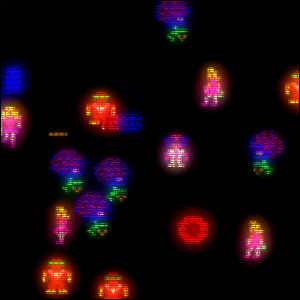 The legendarily tough arcade game Robotron: 2084, designed by Eugene Jarvis (creator of Defender), hits arcades across America and becomes an instant hit. With its two joysticks – one for moving the player’s character, one for firing in any direction – Robotron continues Williams’ hallmark of challenging control schemes, and screws with the fight-or-flight responses of arcade gamers everywhere for years to come.
The legendarily tough arcade game Robotron: 2084, designed by Eugene Jarvis (creator of Defender), hits arcades across America and becomes an instant hit. With its two joysticks – one for moving the player’s character, one for firing in any direction – Robotron continues Williams’ hallmark of challenging control schemes, and screws with the fight-or-flight responses of arcade gamers everywhere for years to come. ![]()
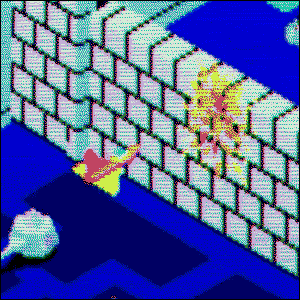 Sega introduces the cult classic arcade game Zaxxon, significantly raising the bar for arcade graphics with its three-quarter isometric 3-D view (and making it nearly impossible to translate faithfully to home video game consoles of the era). Though this new perspective doesn’t make Zaxxon easy to play, it becomes one of the first video games that players line up just to look at.
Sega introduces the cult classic arcade game Zaxxon, significantly raising the bar for arcade graphics with its three-quarter isometric 3-D view (and making it nearly impossible to translate faithfully to home video game consoles of the era). Though this new perspective doesn’t make Zaxxon easy to play, it becomes one of the first video games that players line up just to look at. ![]()
 Atari releases the home version of the popular arcade game Phoenix for the Atari 2600 home video game console.
Atari releases the home version of the popular arcade game Phoenix for the Atari 2600 home video game console. ![]()
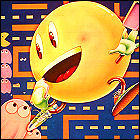 After an extremely short development period and industry insider warnings that the finished product wasn’t ready for prime time, Atari releases Tod Frye’s home version of Pac-Man for the Atari VCS, selling record numbers… and, within weeks, becomes the subject of bad word-of-mouth and critical slams on its weak game play and graphics. At the urging of Atari CEO Ray Kassar, Pac-Man‘s print run exceeds the number of VCS consoles sold to date, since it’s anticipated that the Pac-crazed public will buy the console simply because Pac-Man is available for it.
After an extremely short development period and industry insider warnings that the finished product wasn’t ready for prime time, Atari releases Tod Frye’s home version of Pac-Man for the Atari VCS, selling record numbers… and, within weeks, becomes the subject of bad word-of-mouth and critical slams on its weak game play and graphics. At the urging of Atari CEO Ray Kassar, Pac-Man‘s print run exceeds the number of VCS consoles sold to date, since it’s anticipated that the Pac-crazed public will buy the console simply because Pac-Man is available for it. ![]()